 The first of four magnitudes is said to have the same ratio to the second, which the third has to the fourth, when any equimultiples whatsoever of the first and third being taken, and any equimultiples whatsoever of the second and fourth ; if the multiple... The first of four magnitudes is said to have the same ratio to the second, which the third has to the fourth, when any equimultiples whatsoever of the first and third being taken, and any equimultiples whatsoever of the second and fourth ; if the multiple...  Euclidian Geometry - Page 157by Francis Cuthbertson - 1874 - 349 pagesFull view Euclidian Geometry - Page 157by Francis Cuthbertson - 1874 - 349 pagesFull view - About this book
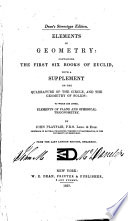 | John Playfair - Euclid's Elements - 1837 - 332 pages
...7nB=77inC, and by hypothesis A=mB, therefore A=7nnC. PROP. IV. THEOR. If the first of four magnitudes has the same ratio to the second which the third has to the fourth, and if any equimultiples whatever be taken of the first and third, and any whatever of the second and... | |
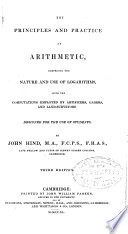 | John Hind - Arithmetic - 1840 - 252 pages
...in iheJifth Book of Euclid's Elements, that " Proportion is the Similitude of Ratios; and theJirst of four magnitudes is said to have the same ratio...the second, which the third has to the fourth, when any equimultiples whatever of the^rst and third being taken, and any equimultiples whatever of the... | |
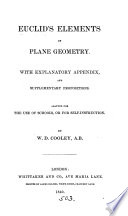 | Euclides - 1840 - 192 pages
...multiples or submultiples which are equal, those pairs of numbers are proportional, or the first has the same ratio to the second which the third has to the fourth. But it must be remembered that there are incommensurable magnitudes, the relative values of which,... | |
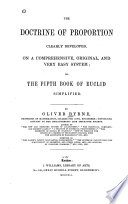 | Oliver Byrne - Mathematics - 1841 - 144 pages
...understand this definition before proceeding further. с 2 PROP. IV. THEO. If the first of four magnitudes have the same ratio to the second, which the third has to the fourth, then any equimultiples whatever of the first and third shall have the same ratio to any equimultiples... | |
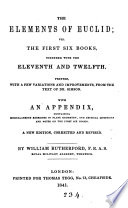 | Euclides - Geometry - 1841 - 378 pages
...the fourth. If, therefore, the first, &c. QED PROP. IV. THEOR. If the first of four magnitudes has the same ratio to the second which the third has to the fourth; then any equimultiples whatever of the first and third shall have the same ratio to any equimultiples... | |
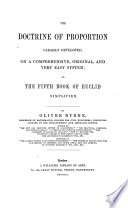 | Oliver Byrne - Mathematics - 1841 - 140 pages
...a, artd (m — n) b с = b, when m — n = 1. PROP. A. THEO. If the first of the four magnitudes has the same ratio to the second, which the third has to the fourth, then, if the first be greater than the second, the third is also greater than the fourth ; and if equal,... | |
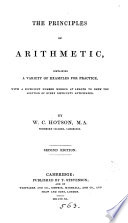 | Wales Christopher Hotson - 1842 - 306 pages
...:: a + c + e ... : 6 + d +/... 149. Geometrical Definition of Proportion. (Euclid, book v. def. 5). The first of four magnitudes is said to have the same...the second which the third has to the fourth, when any equimultiples whatsoever of the first and third being taken, and any equimultiples whatsover of... | |
 | Euclides - 1842 - 316 pages
...the ratio of the third to the fourth. Definition of proportion according to Euclid, (Def. V., Book " The first of four magnitudes is said to have the same...the second, which the third has to the fourth, when any " equimultiples whatsoever of the first and third being " taken, and any equimultiples whatsoever... | |
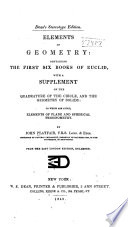 | John Playfair - Euclid's Elements - 1842 - 332 pages
...mB=mnC, and by hypothesis A=mB, therefore A=wmC PROP. IV. THEOR. If the first of four magnitudes has the same ratio to the second which the third has to the fourth, and if any equimultiples whatever be taken of the first and third, and any whatever of the second and... | |
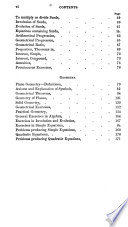 | Scottish school-book assoc - 1845 - 444 pages
...geometrical magnitudes, and therefore it is necessary to substitute another, which is as follows: — Def. The first of four magnitudes is said to have the same ratio to the second, that the third has to the fourth, when any equimultiples whatever of the first and third being taken,... | |
| |